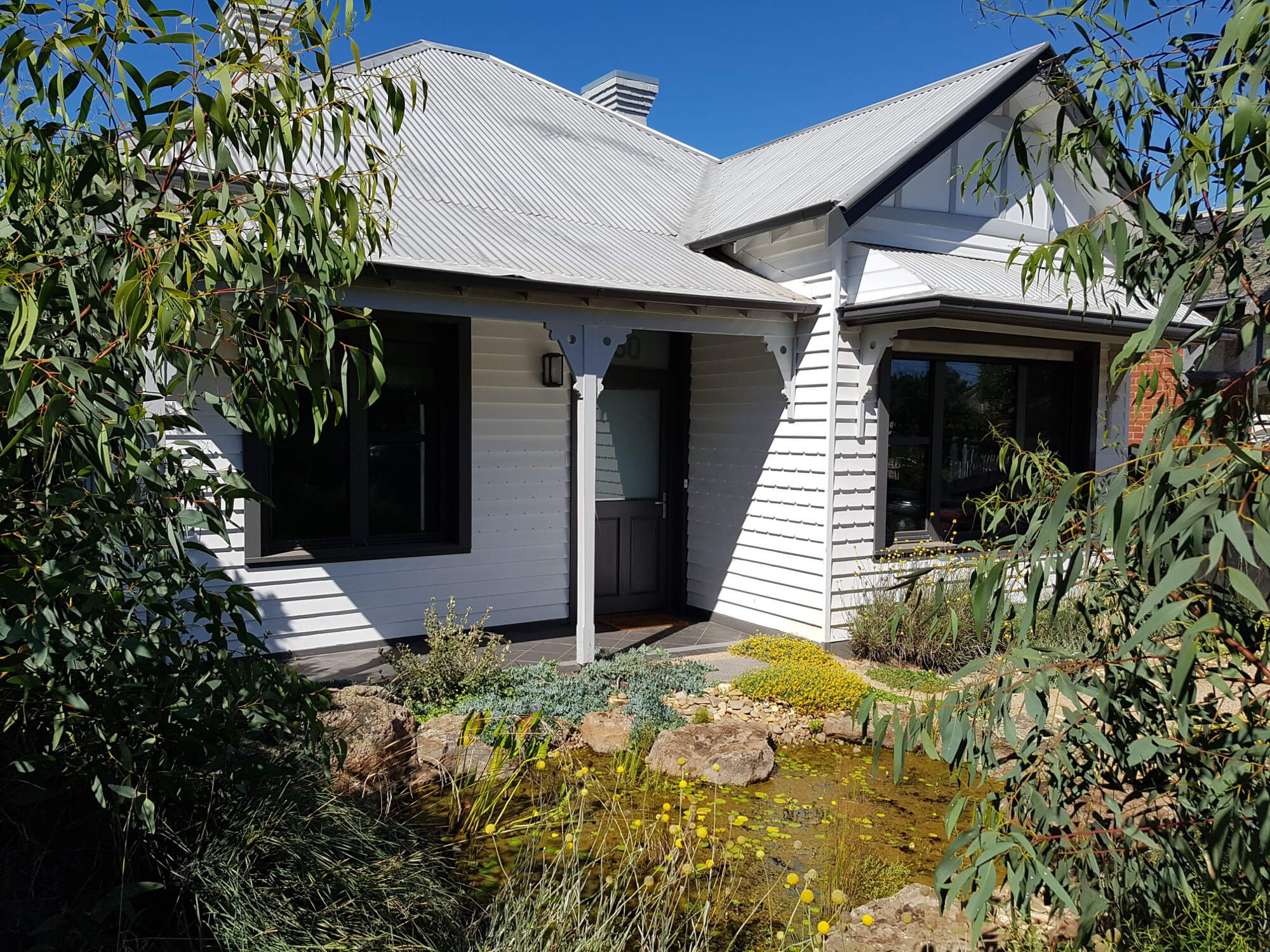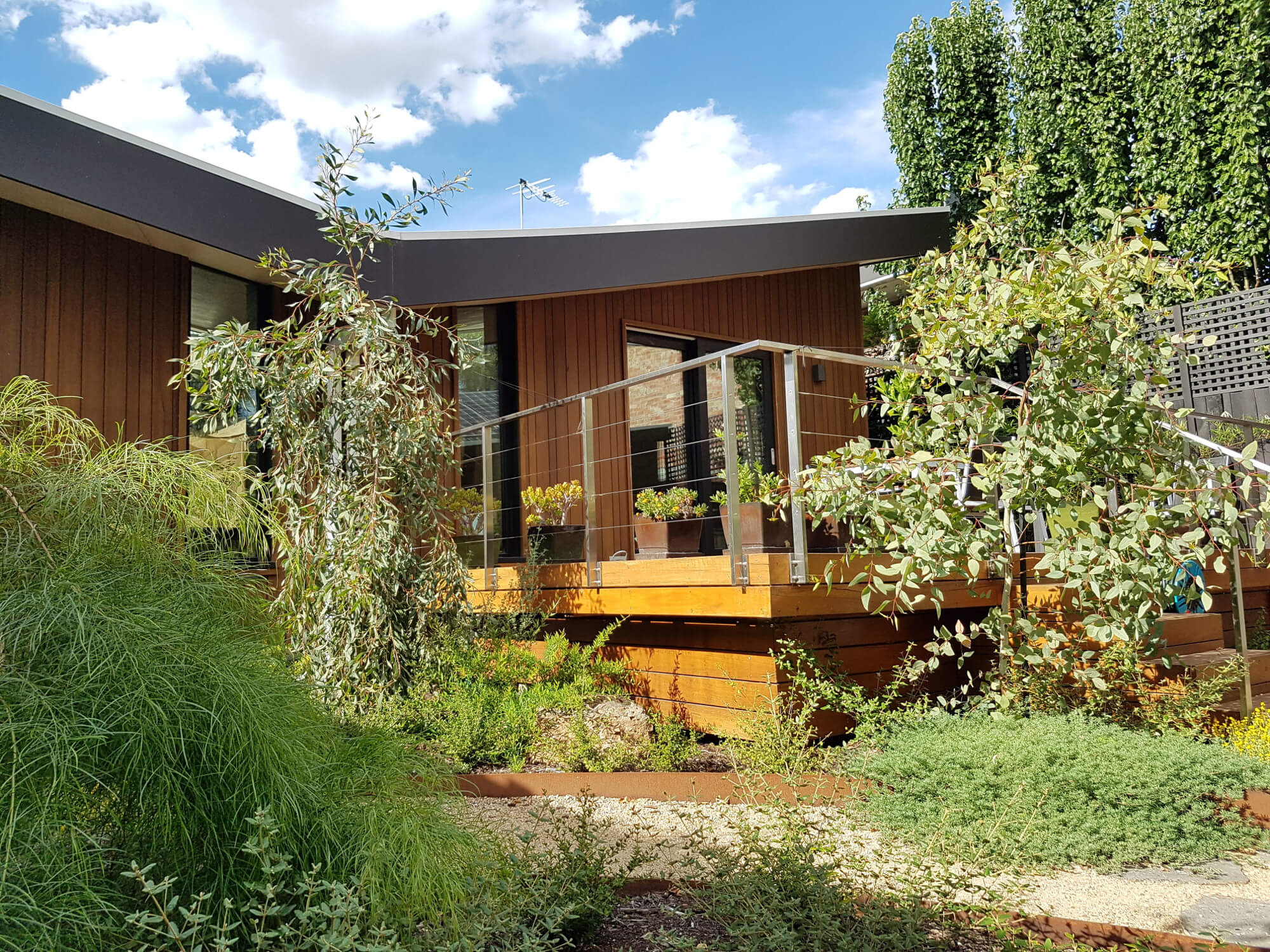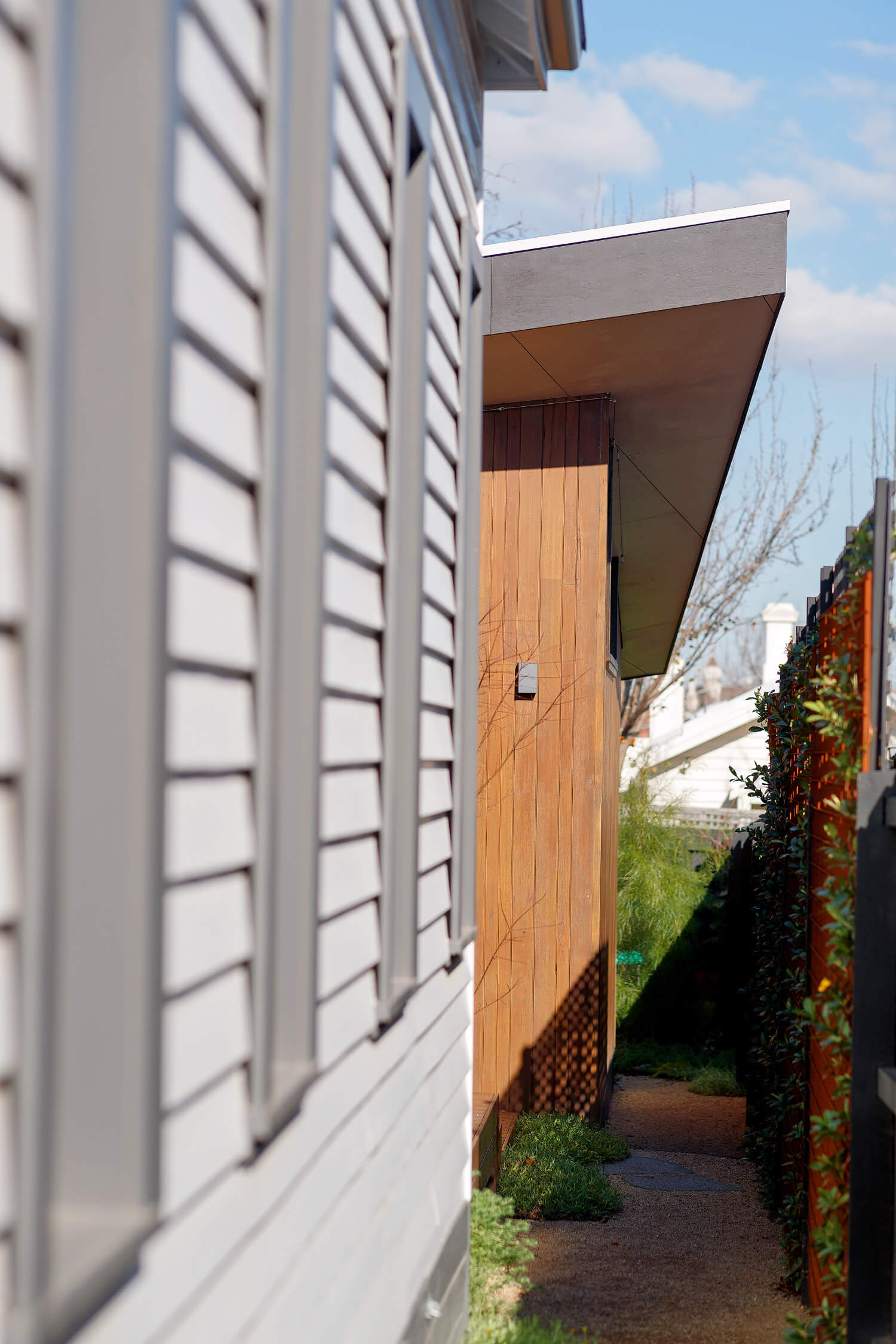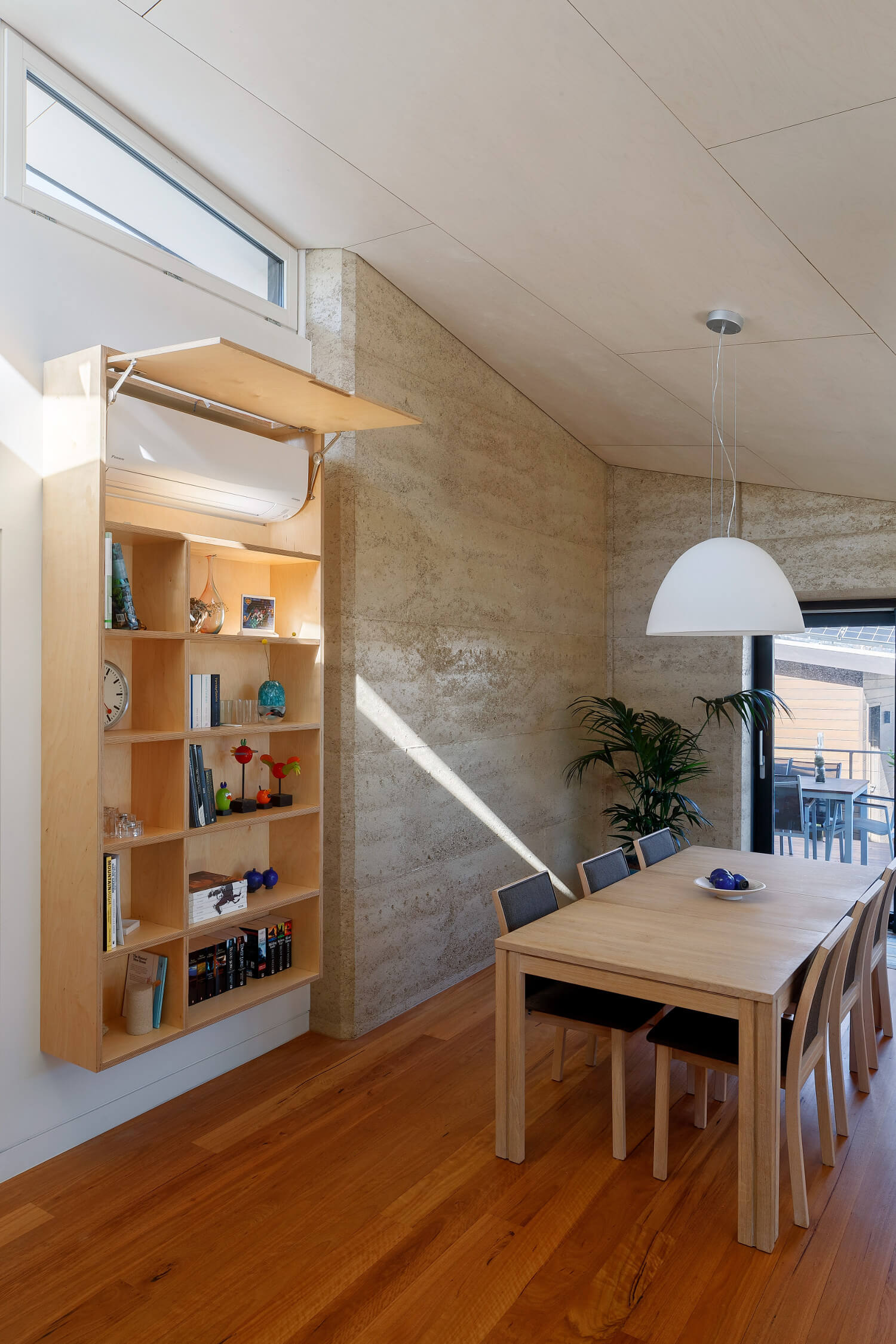Chapter 1 Introduction
1.1 Context
The home consisted of a weatherboard dwelling of ca. 1910 vintage with a 1980s extension to the rear. The block is oriented such that the narrow frontage faces north, reducing the opportunity to maximise passive solar gains. Moreover, the area is covered by a heritage overlay which precluded extensive alteration to the facade. This included retention of the two brick chimneys.
Figure 1: General views





1.2 Our ambitions
We’d lived in northern Europe for a number of years and become accustomed to buildings that have a sense of solidity and stable internal temperatures. Neither of these features seem common to Australian homes in our experience. Moving back to Australia we bought a similar weatherboard home in 2007 and retrofitted that home with double glazing, solar PV, additional ceiling insulation and pumped expanding foam insulation into the external wall cavities. This new home provided an opportunity to go much farther, as it required extensive renovation.
As well as aiming to meet our comfort expectations we were keen to minimise our energy consumption and move towards energy self-reliance as much as possible. To achieve this we needed to ensure our energy needs within the building, for which space heating is by far the most important, would be minimised.